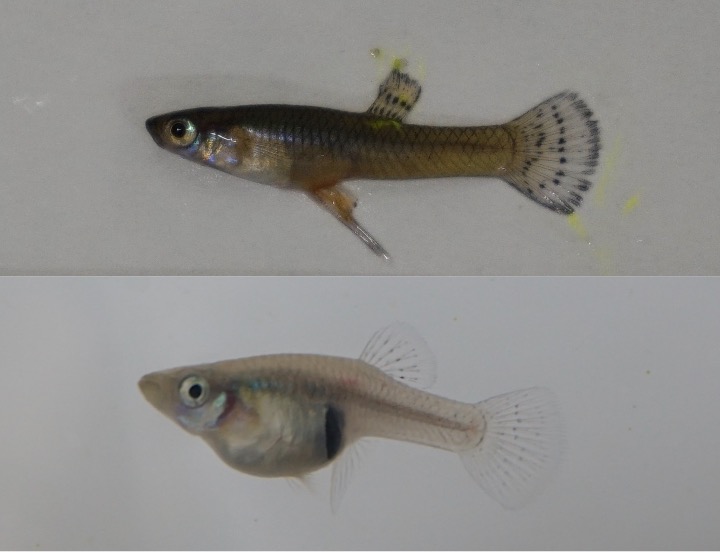
Author: Dr. Jessica Judson
On a warm, humid day in central Florida, the air buzzes with thousands of wings of adult mosquitos. If you find yourself outside near a still body of water, you may become victim to a female mosquito as she relentlessly searches for her next meal. Once she has that meal, she finds a pool of water to lay her eggs, and the mosquito lifecycle begins. However, for these eggs to make it to adulthood, they have to survive the many predators of Florida waters, and this is where the mosquitofish comes in.
Mosquitofish are small, unassuming fish that can be found in almost every body of fresh water in central Florida. “I would always call small fish like these ‘minnows’ when I was a kid. You can take a net and scoop up dozens of them off the docks at local lakes, like Lake Istokpoga. Mosquitofish can even be found in roadside ditches!” says Dr. Jessica Judson, a researcher from Michigan State University working at Archbold Biological Station. “Mosquitofish are one of the most abundant freshwater fish species in Florida. They have an amazing tolerance for high temperatures, like we sometimes see in ponds in the scrub at Archbold, and they can even tolerate salty brackish waters.”
Mosquitofish get their name because they are ravenous predators of mosquitos and their larvae. In central Florida, mosquitofish have no problem finding plenty of food. “They will eat just about anything they can fit in their mouths, including insects and aquatic plants,” Dr. Judson adds. As mosquitos can carry West Nile virus and Zika virus, mosquitofish have been introduced to bodies of fresh water around the world in an attempt to control the mosquito populations, albeit with mixed success. “Unfortunately, we have found that mosquitofish don’t control mosquito populations as well as hoped in other countries. Instead, native fish usually do as well, or better, at controlling mosquitos than mosquitofish, and mosquitofish tend to have a more varied diet than their name suggests. Here in central Florida, however, mosquitofish are an important native species in freshwater ecosystems. They eat insects and plant material, and in turn mosquitofish are a staple in the diet of larger fish we like to catch in our Florida lakes.”
How do you know if you’ve netted a mosquitofish? Mosquitofish are silvery to dark grey in color and less than 3 inches long. Male mosquitofish have a longer fin on their belly, called a gonopodium, and females are larger than males and have a black spot on their belly to indicate they are pregnant. “Another cool fact about mosquitofish is that they are live-bearers, meaning that instead of laying eggs like many fish, they give birth to live young which are immediately ready to swim,” says Dr. Sarah Fitzpatrick, a professor at Michigan State University who studies mosquitofish and grew up near Archbold. Dr. Fitzpatrick is interested in understanding the negative effects of inbreeding, which is when close relatives produce offspring. Inbreeding often happens when population sizes are very small and is one of the drivers of biodiversity loss. “We are currently using mosquitofish to study the effects of small population size and inbreeding at Archbold. Mosquitofish are great fish for experiments where we need to manipulate things like population size, and Archbold has everything we need to keep these fish happy and healthy.”


